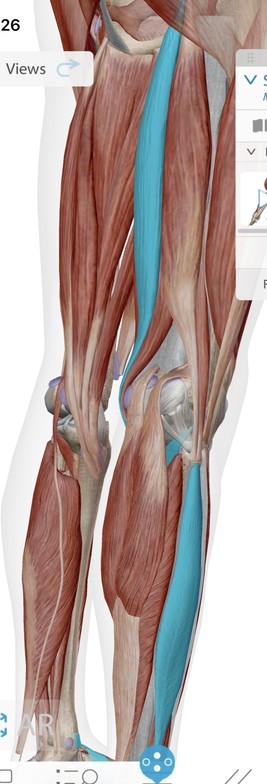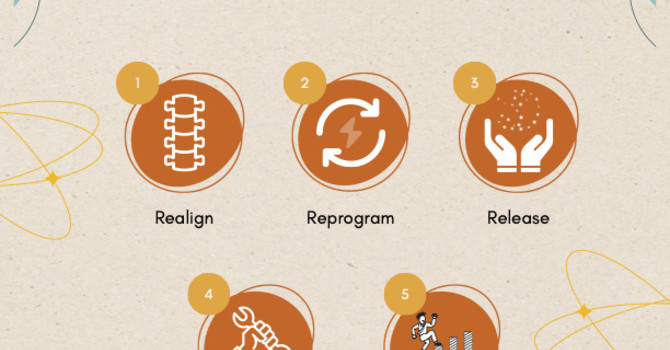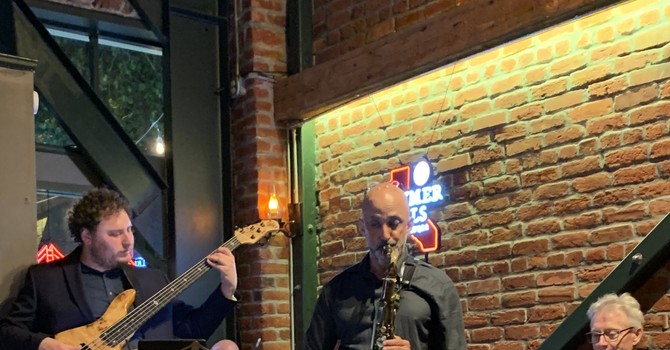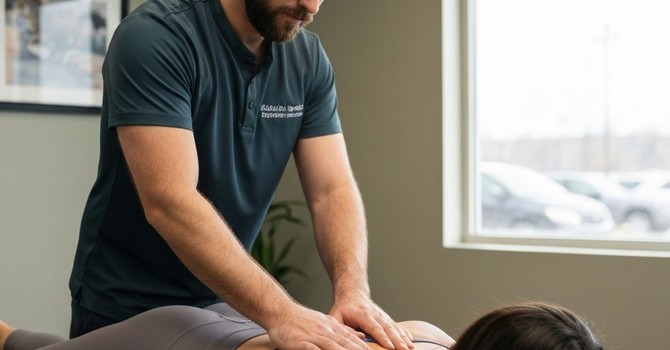I broke up this Blog into three parts:
Part 1 focuses on her left leg - finding and fixing the leg muscle imbalances, adjusting the leg, ankle and foot, and releasing tight muscle
Part 2 focuses specifically on her right leg
Part 3 focuses on her low back and hip alignment, as well as posture, arch supports and strengthening exercises
PART I
HISTORY:
The patient is a 30-something year old female who presents with chronic left knee pain. I treated her right knee pain at the gym about a month ago, and the discomfort then moved to the left. She’s had it most of her adult life, though she became more aware of it over the past three years, and it’s gotten even worse over the past 6 months. It prevents her from taking long walks or hikes, lifting weights or even standing for long periods of time. She states that when she was a child, she used to do Mexican folk dancing where she would stomp on concrete in “yap heels,” and this may be where the initial trauma started.
ANKLE: Additionally, she twisted her right ankle yesterday stepping off a deck into a hole in the dirt. She "kind of" felt a pop, though her ankle didn't swell and is currently just sore. The patient points to the front of her right ankle and both inner shins
FEET: She has sensitive inner shins due in part to her flat feet.Knee: the patient points to the back of her left knee (called the Popliteal Fossa)
FINDINGS:
The patient’s feet collapse when she stands (loads), which is referred to as pronation.When I asked her to come into a deep supported squat, she tucks her hips, indicative of an overfiring ( hypertonic) low back muscles which are likely shutting down (inhibiting) the Glutes.
TECHNIQUES & APPROACH:
I assess using multiple techniques to check and correct alignment, muscle balance and firing patterns.
P-DTR ASSESSMENT:
Left leg:
The following muscles were over-working (Hypertonic): The three deep quads known as the Vastus (outer, middle and inner), and the fourth superficial quad known as the Rectus Femoris. Also the Popliteus, which is the little muscle behind the knee.
The following muscles were under-working (Hypotonic): Peroneus Longus (this muscle is on the outside of the lower leg)
P-DTR TREATMENT:
I found a dysfunctional receptor pattern involving the outer Vastus (quad) muscles that involved a dysfunctional vibratory and a deep pressure receptor in the outer lower leg (Peroneus Longus). Specifically, a vibration receptor (responsive to 512 Hz called a Krauss receptor) in the Vastus Lateralis (outer quad) paired with a deep pressure receptor (called a Pacini receptor) in the Peroneus.
Proper stim of these followed by a deep tendon reflex reset this dysfunctional pattern
ACTIVE RELEASE TECHNIQUE (ART):
Once all four parts of the Quad were neurologically reset, I was then able to release the tightness using a very specific Pin & Stretch technique called ART. As a Full-Body-Certified Practitioner, I am taught how to isolate and release a majority of the 600+ skeletal muscles in the body. And as an Applied Kinesiologist and P-DTR Therapist, I am further able to muscle test them to really know what needs to be done.
DISCUSSION:
P-DTR DISCUSSION:
P-DTR uses muscle testing to assess proper neurologic function of the musculo-skeletal system by determining if muscles are turning on and off correctly. We move by that on-off pattern - when one muscle turns down, the opposite muscle turns up. I think of these muscles like light bulbs, and receptors like light switches.
Mechanoreceptors are the class of receptors in the body that detect movement and communicate this to the brain. The brain in turn takes this information and tells muscles in the body to turn up or down. These receptors are very specialized, some responding to stretch, some to light or deep pressure, and some to various levels of vibration.
PAIN: There are also a class of receptors that convey information about pain. The most common are those reactive to a pin prick or a slap, but there are many others as well. They follow specific spinal tracts that can be stimulated via eye movement (such as looking towards the area of pain), thinking about the area of pain, hot & cold stimulation and even via stimulating hair follicles.
In this case study, we are only dealing with Mechanoreceptors. In P-DTR, there are always two main (primary & secondary) muscles involved in a dysfunctional pattern. Other muscles get pulled into it, but treating those (tertiary) muscles won’t fix the problem. The muscles are out of balance with each other because of specific receptors found within them. These receptors send signals to the brain about things such as movement and position. More specifically, info mostly about pressure, stretch and vibration.
ACTIVE RELEASE TECHNIQUE, ART DISCUSSION:
Active Release Technique (ART) is a specialized form of manual therapy developed by Dr. Michael Leahy. (Side note: Dr Leahy before becoming a chiropractor, was trained as an aerenautical engineer. He was literally a Rocket Scientist!). Dr Leahy developed ART to treat soft tissue disorders.
This hands-on treatment method focuses on addressing problems in muscles, tendons, ligaments, fascia, and nerves by breaking down adhesions and scar tissue that can accumulate due to injury, overuse, or repetitive strain.
During an ART session, a trained practitioner applies precise tension to the affected area while guiding the patient through specific movements, allowing for the release of restricted tissues and restoration of normal function.
This technique is highly effective in treating various conditions such as carpal tunnel syndrome, tennis elbow, sciatica, and many sports-related injuries, often providing quick results and lasting pain relief. ART has gained popularity among athletes and individuals seeking to improve their range of motion, reduce pain, and enhance overall physical performance.
ART is regarded as the Gold Standard for soft tissue therapy.
CONCLUSION:
Following this treatment, the patient reported by the next day that she was back to walking and working out without any knee pain.
It is my clinical estimation that much of the dysfunctional patterns that I found during this session had been with the her for possibly years. When I do an assessment and collect “data points” (ie under or over-firing muscles, misalignments, postural patterns), I can almost always guarantee that pattern isn’t going anywhere, unless we actively work to disrupt and correct it. If I were to write down my findings and follow up with her in 6 months, chances are that the same findings would be there. Likewise, if I make the above-mentioned corrections, in most cases the same findings will NOT be present on a follow up.
Of course physical damage doesn’t just go away, and requires time and effort to heal. And sometimes surgery is called for as well. Examples may include torn knee cartilage (Meniscus) or ligaments (ACL, PCL, LCL, MCL), a torn hip labrum, disrupted ankle ligaments, herniated lumbar discs and any other number of findings resulting from trauma, wear & tear over time, developmental disruptions, genetic variants and even anomalies such as a sacralized lumbar (where a lumbar vertebra fuses to the sacrum) or a 6th lumbar vertebra (usually there are five, and a 6th can lead to some instability).
In cases where improvement is not forthcoming, an X-Ray (shows bones) or MRI & CT (shows soft tissue) can shed light on an underlying condition. And that is when an orthopedic surgeon's assessment and intervention may be helpful. Through my 25 years of practice, I've sent my fair share of patients for hip replacements, and most if not all were happy they went through with it! That said, I probably helped many many others avoid surgery.
PAIN:
Getting someone out of pain is sometimes a quick process, and sometimes it takes a longer time or even never happens! Sometimes the healing process is learning to accept our physical limitations and our physical realities. And that is often where the true healing occurs. Learning to accept, adapt, and strengthen leads to the most long-lasting change.










